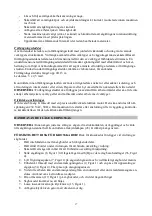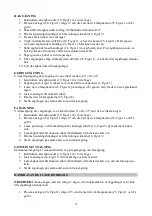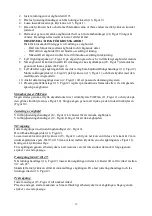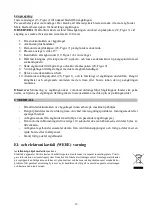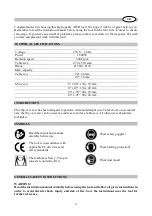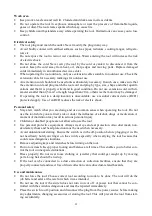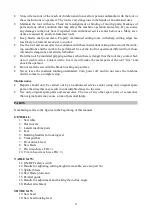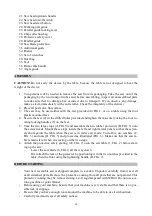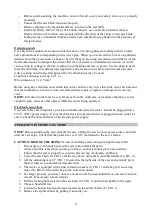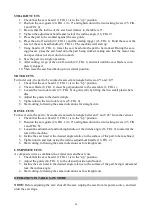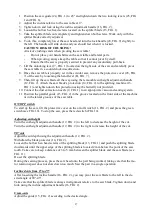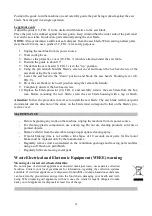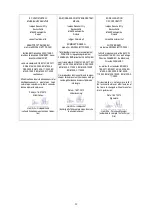
22
Work area
•
Keep work area clean and well lit. Cluttered and dark areas invite accidents.
•
Do not operate the tool in explosive atmosphere or near the presence of flammable liquids,
gases or dust. The tool creates sparks which may cause fire.
•
Keep children and bystanders away while operating the tool. Distractions can cause you to lose
control.
Electrical safety
•
The tool plug must match the outlet. Never modify the plug in any way.
•
Avoid bodily contact with earthed surfaces such as pipes, radiators, cooking ranges, refrigera-
tors etc.
•
Do not expose the tool to rain or wet conditions. Water entering the tool will increase the risk
of electric shock.
•
Do not abuse the cord. Never carry the tool by the cord or yank it to disconnect it from the
socket. Keep the cord away from heat, oil, sharp edges and moving parts. Replace damaged
cords immediately in an authorized service center.
•
When operating the tool outdoors, only use extension cables suitable for outdoor use. Check the
extension cable for necessary markings for outdoor use.
•
An extension cord should not be used unless absolutely necessary. In such case, make sure that
the extension cord and plug match the tool cord and plug by type, size, shape and other qualifi-
cations and that it is properly wired and in good condition. Do not use extension cord with di-
ameter smaller than 2,5 mm
2
or length longer than 20 m, otherwise the motor may be damaged.
•
If operating the tool in a damp location is unavoidable, use a residual current device (RCD)
protected supply. Use of an RCD reduces the risk of electric shock.
Personal safety
•
Stay alert, watch what you are doing and use common sense when operating the tool. Do not
use the tool while you are tired, sick or under the influence of alcohol, drugs or medication. A
moment of inattention may result in serious personal injury.
•
Children or disabled people are not allowed to use the tool.
•
Use personal protective equipment. Always wear eye and ear protection. Also dust mask, non-
skid safety shoes and head protection must be used when necessary.
•
Avoid unintentional starting. Ensure the switch is in the off-position before plugging it in. Do
not needlessly hold your finger on the switch, especially when carrying the tool because this
could cause dangerous situations.
•
Remove adjusting keys and wrenches before turning on the tool.
•
Do not overreach. Keep proper footing and balance at all times. This enables you to better con-
trol the tool in unexpected situations.
•
Dress properly. Do not wear loose clothing or jewellery that could get caught up by moving
parts. Long hair should be tied up.
•
If the tool can be connected to a dust extraction or collection facilities, ensure that they are
properly connected and used. Use of dust collection can reduce dust-related hazards.
Use and maintenance
•
Do not force the tool. Choose correct tool according to work to be done. The tool will do the
job better and safer at the rate for which it was intended.
•
Do not use the tool if the switch does not turn it on or off. A power tool that cannot be con-
trolled with the switch is dangerous and must be repaired immediately.
•
Place the switch to off-position and disconnect the plug from the power source before making
any adjustments, changing accessories or storing the tool. This will prevent the tool from start-
ing accidentally.










